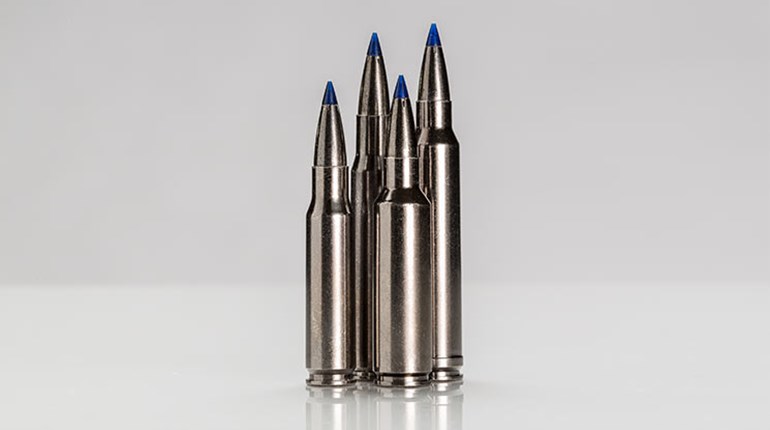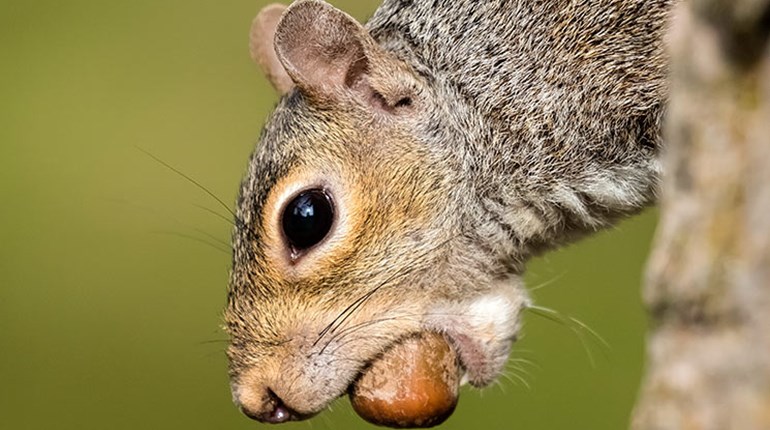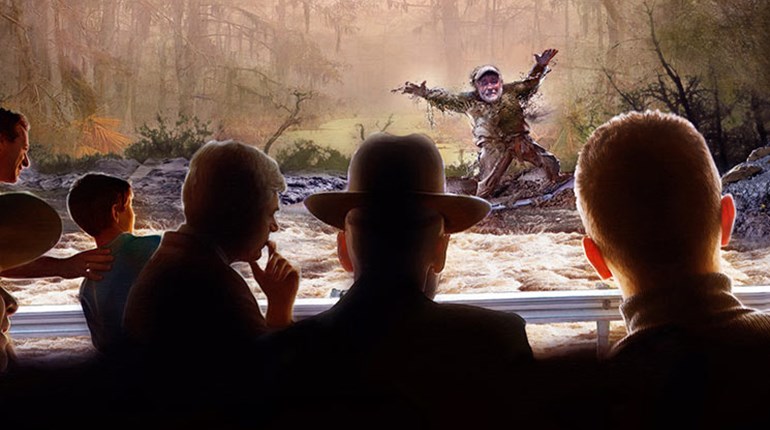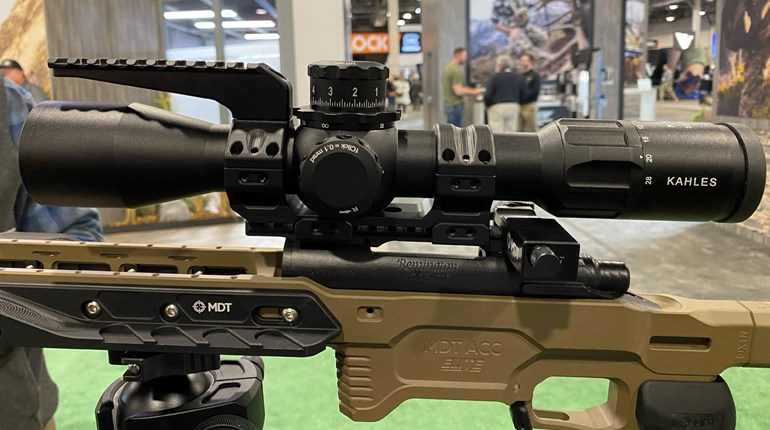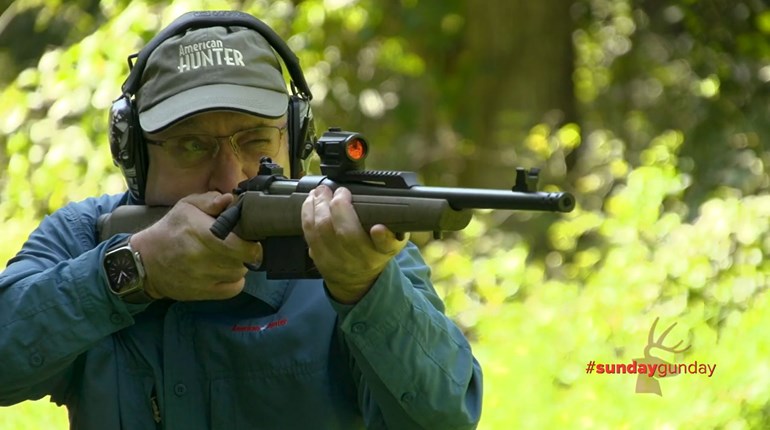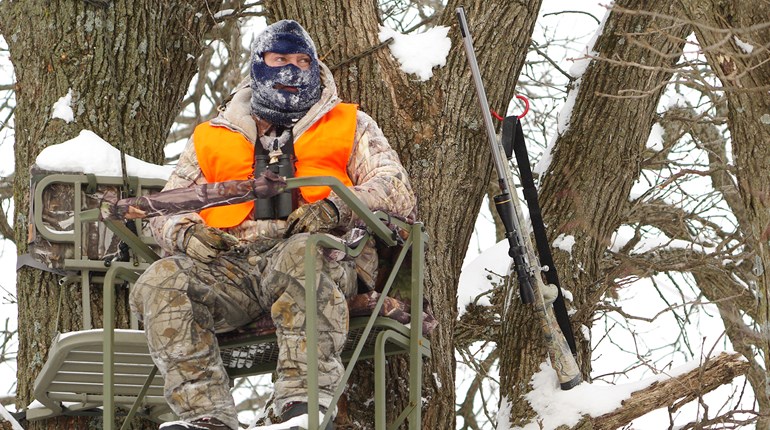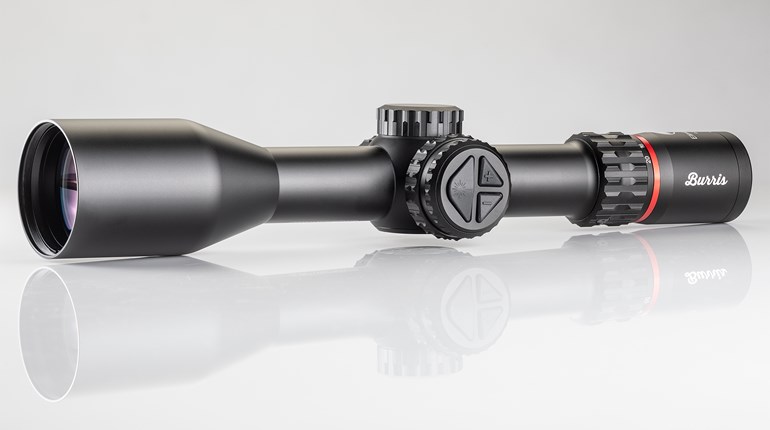There are men who change the world. Larry Benoit was one of them.
He didn’t plan to do that, and if asked how, he would have been at a loss. Still, in the end, he changed the world. At least our world.
There are a couple of generations of hunters now who never knew a time when whitetail hunting wasn’t king. But in our grandfathers' time, the major hunting magazines paid little attention to the far too common whitetail. Everybody hunted them, but nobody wanted to read about them. Then it all changed in a very big way.
The whitetail boom grew through the ’70s and ’80s, and some say it started with Larry Benoit and a talented photographer and writer named Peter Miller. Miller shot the photo on the cover of the September 1970 issue of Sports Afield magazine, at that time one of the “Big Three” in outdoor publishing. It was a photograph of Larry staring down the barrel of a peep-sighted, Remington Model 742 rifle. The tag line was, “Larry Benoit—Is He the Best Deer Hunter in America?” Inside was a feature article written by Miller, “A Special Breed of Deer Hunter.” That article launched the book for Benoit and Miller, How to Bag the Biggest Buck of Your Life, which launched a revolution. Larry Benoit went on to become not only arguably the best deer hunter in America, but also most certainly the best known.
The petals were wilting a bit on the Benoit rose when I came on the scene professionally in the mid-’90s. A magazine assignment on the Benoit way of tracking deer turned into my first book, Big Bucks the Benoit Way.
As a writer I can tell you that there are few experiences in life that compare with the day you hold in your hands the first copy of your first book. That 1998 book went on to become the bestselling whitetail hunting book in history. I followed with a second book, Benoit Bucks, in 2003 and later, in 2007, with Big Bucks the Benoit Way, 2nd Edition.
I was already an experienced deer tracker when I started that first book. It would have been impossible to write it otherwise, but you can’t do a project of that magnitude with somebody of Larry Benoit’s knowledge without learning a great deal more.
In tribute to the passing of a man who was significant in my life, here is a little bit of what Larry taught me about deer hunting.
Mindset
If there is one thing that defines the hunter who will take trophy bucks with any regularity, it is a solid drive to succeed. That hunter will have a single-minded determination that borders on obsessive.
Larry told me, “It is a lot like boxing. Often the results depend on how badly you want it. The man who wants to win the most, the man who keeps going no matter what, is usually the one who succeeds. Tracking deer is much the same.
“You have to keep at it day after day,” Larry said. “No matter what. Just because you are tired from the day before, you can’t give up. If it’s storming or cold outside you have to go anyway. If you are a boxer, just because you get knocked down in the first round, are you going to quit? Not if you want to win. Get up and come back, use your knowledge, use the mistakes to learn, make them stepping stones.
“If you make the same mistakes every time you go deer hunting, you aren’t going to accomplish a thing. You need to learn, to grow, to progress as a hunter. If you couple that with a drive to keep going no matter what, you can become a trophy buck hunter.
“The sweat is running down your face, your feet are telling you they can go no more. You 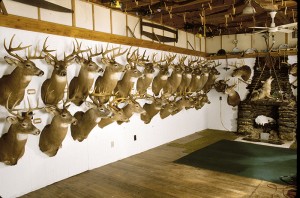 have a cramp between your shoulder blades from carrying your rifle and you feel like you are drained. You realize that you have 8 or 10 miles to get out of the woods and back to the truck. It’s depressing and it’s when the unsuccessful hunter quits. But the hunter who wants to succeed has to understand that the next day you will go back and get on him again. Somewhere out there at the end of those tracks is your dream buck. He is going to lie down sometime and you will want to be there when he does. So you get back to camp, drag your boots off, fall out of your hunting pants, climb into bed and dream of your big buck. At 3:30 or 4:00, you awake and fall out of bed stiff and lame. You get into your pants, still wet from the day before, and limp off to get some food into your belly and then you go back into the woods and pick up the tracks again.”
have a cramp between your shoulder blades from carrying your rifle and you feel like you are drained. You realize that you have 8 or 10 miles to get out of the woods and back to the truck. It’s depressing and it’s when the unsuccessful hunter quits. But the hunter who wants to succeed has to understand that the next day you will go back and get on him again. Somewhere out there at the end of those tracks is your dream buck. He is going to lie down sometime and you will want to be there when he does. So you get back to camp, drag your boots off, fall out of your hunting pants, climb into bed and dream of your big buck. At 3:30 or 4:00, you awake and fall out of bed stiff and lame. You get into your pants, still wet from the day before, and limp off to get some food into your belly and then you go back into the woods and pick up the tracks again.”
That’s how you win.
Hunt Before You Hunt
Far too many hunters get stuck on stupid and keep hunting areas that simply don’t have any large bucks. The first step to shooting a huge whitetail is to find the deer. Hunt for a big buck then hunt that big buck.
Larry would always look for the hardest country he could find, places where no other hunters want to venture. “The harder the country, the better,” he said. “There are not too many people willing to work that hard and the bucks know it.”
Big, Northern bucks are loners with predictable habits, and many will have their favorite spots they keep going back to again and again. Those places will be remote and nasty enough that they know hunters will not bother them.
You don’t necessarily have to go into these places, because unless you are following a fresh track, the chances of actually killing the buck if you randomly go in there are not good. After all, that’s why he chose the spot in the first place. But knowing and recognizing those locations as a buck’s hangout is the key to finding a trophy buck. He may be in there resting and recuperating from several nights of chasing does, but he won’t stay for long. Think about it: Deer breed only once a year and for a very short time span. If you were a healthy male who only got lucky a few weeks a year, how much time would you spend hanging around home during those weeks? Sooner or later the buck will leave and start traveling in search of hot does. When he does he has to leave tracks. You have to know where to look for them. You do that by finding the buck first. Look for old tracks, rubs, scrapes—anything to tell you there is a big buck in the area. If you are not finding that, keep looking. Expand your territory.
If you are hunting where there are very few or no trophy bucks, move! How much more obvious can it be? Yet thousands and thousands of hunters fail to shoot a good buck every year simply because they continue to hunt in lousy places.
To find trophy bucks you must remove yourself from the huddled masses and go where no man has gone before (or at least recently).
Track a Buck You Can Catch
The first time I hunted with Larry he was 74 years old. While he had not slowed down much, he had matured as a deer hunter.
“At this age I don’t look for a smoking hot deer track to follow anymore, I look for one that still has the fire in it,” he said. Meaning the fresher the track, the closer the buck.
That statement led to a lesson on which deer to hunt.
“Just because you found a big buck track doesn’t mean you can kill him,” Larry told me. 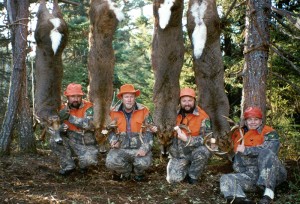 “You need to know what that deer has been up to and what his plans are for the future. If he is coming down off the top of a spruce-covered mountain and his tracks are lining out like he is late for an appointment, you probably can’t catch that deer. Odds are he has been up there resting. He fed before he laid down and probably fed again when he got up. Now he is fresh and ready to look for does. It’s a waste of energy to track that buck.
“You need to know what that deer has been up to and what his plans are for the future. If he is coming down off the top of a spruce-covered mountain and his tracks are lining out like he is late for an appointment, you probably can’t catch that deer. Odds are he has been up there resting. He fed before he laid down and probably fed again when he got up. Now he is fresh and ready to look for does. It’s a waste of energy to track that buck.
“But if the track is reversed and that buck is heading up to the spruce-covered mountain top, he is probably looking for a place to bed down and get some sleep. That’s a buck you should hunt. He is tired and not on top of his game, but more important he is going to feed a little bit and then bed down. That means you can catch him.”
Know How to Move on the Track
“The biggest single reason that most hunters fail to see the deer they are tracking is that they do not move fast enough,” Larry told me many times.
“The buck may have several hours’ start on you and he is traveling on four legs instead of two. If you pussyfoot around then you will never catch up. The hunter needs to be able to cover ground fast to catch up to the deer, while at the same time he needs to be as quiet as possible and alert so that he sees the buck before the buck sees him. He must also read the sign to know when it is time to slow down and pussyfoot along. If you misread the sign and keep crashing ahead, you will spook the buck. The key to tracking whitetails is in knowing what to do and when to do it.”
The best sign that a buck is getting ready to bed is that he will almost always eat a little first. If the deer is meandering and munching here and there on buds, or pawing the ground for ferns or beechnuts, he may be getting ready to bed for a while. The inexperienced tracker may not realize this and keep charging ahead; you can be sure that he will spook the buck, probably without getting a shot. However, the woods-wise hunter recognizes the sign and slows down. He hunts carefully and slowly now, picking the woods apart with his eyes. He moves only after seeing everything within his range of vision. Soon, maybe he will see the deer and the game is over.
Anytime you see a buck feeding it is a good sign that he is getting ready to bed, which means that it is time to slow down, be quiet, be ready and pay attention. Sometimes though, a buck will simply grab a nip of browse here and there as he walks along. His tracks may not indicate a lot of difference, and to notice it you will usually have to watch the brush along his path. A less-than-observant tracker may miss this, as the nipped branches are not all that obvious. The buck may not even break stride as he feeds, but still he is bedded down just ahead. If you miss the sign and keep walking fast you will jump him out of his bed, usually without a shot.
The key here is to stay focused and ready, but to try your best to interpret the sign, so you don’t get left behind.
Some guys say, “I tracked him all day long and kept jumping him up and jumping him up, but never saw him.” That’s because they are not looking for a buck properly. It’s a lack of concentration, but also a lack of proper sign reading.
The End Game
Larry taught me a lot about the final minutes before you shoot a buck, or run him off.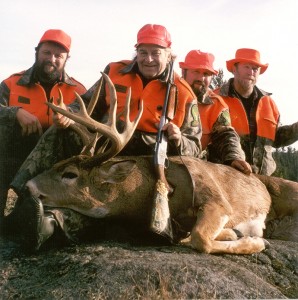
"You can follow a track all day,” he said. “But if you make a single mistake when you finally catch the buck, it’s all for nothing.”
This is where a lot of hunters, including myself, struggle to get it right.
“Never stare at the track for more than a few seconds at a time, always keep your eyes moving,” Larry told me. “Shift your vision out to the farthest you can see and make sure you look at all the land in between. It is easy to be looking off in the distance and miss a deer right in front of you. (I know I have done it more than once!) It doesn’t even have to be a long distance, in many places you may only be able to see less than 100 yards, but in concentrating to see into the brush at that distance you may overlook a buck bedded 25 yards in front of you. You must be aware of everything that is in your field of vision, including, of course, the tracks.
“Lots of hunters get so exasperated with trying to figure it all out that they get sloppy and start to walk fast and look too much at the track,” Larry said. “They lose caution. That’s when the buck is standing there watching them, and then he is gone, out of there. If they had just kept their head up and kept looking instead of watching the ground they could have taken that buck.
“You are going to run into this situation almost every time you track a buck, and if you can’t deal with it you will never be successful as a tracker.”
The end game is about being able to go slow, but it’s also about knowing when to go slow. A lot of hunters blow it at the end. You need to be able to read the sign and know what that buck is going to do. Sooner or later that buck is going to stop; he is likely worn out from rutting and chasing does, and he wants a nap. Anybody can follow an easy track to that buck, but it takes a lot more to kill him. “If you don’t have the hunting skills to know when to go fast or when to slow down and the ability to slip up quietly, you will never get him,” Larry said.
“Killing trophy whitetails by tracking has a lot more to do with good hunting skills than it does with the ability to run up and down mountains.”
Larry passed away on Oct. 8, 2013, at the age of 89, ending the reign of this reluctant whitetail legend. When I sign a book for someone I often wish “clear tracks and short drags.” I hope Larry has found that.
Signed copies of Big Bucks The Benoit Way, 2nd Edition and Benoit Bucks are available at brycetowsley.com.












